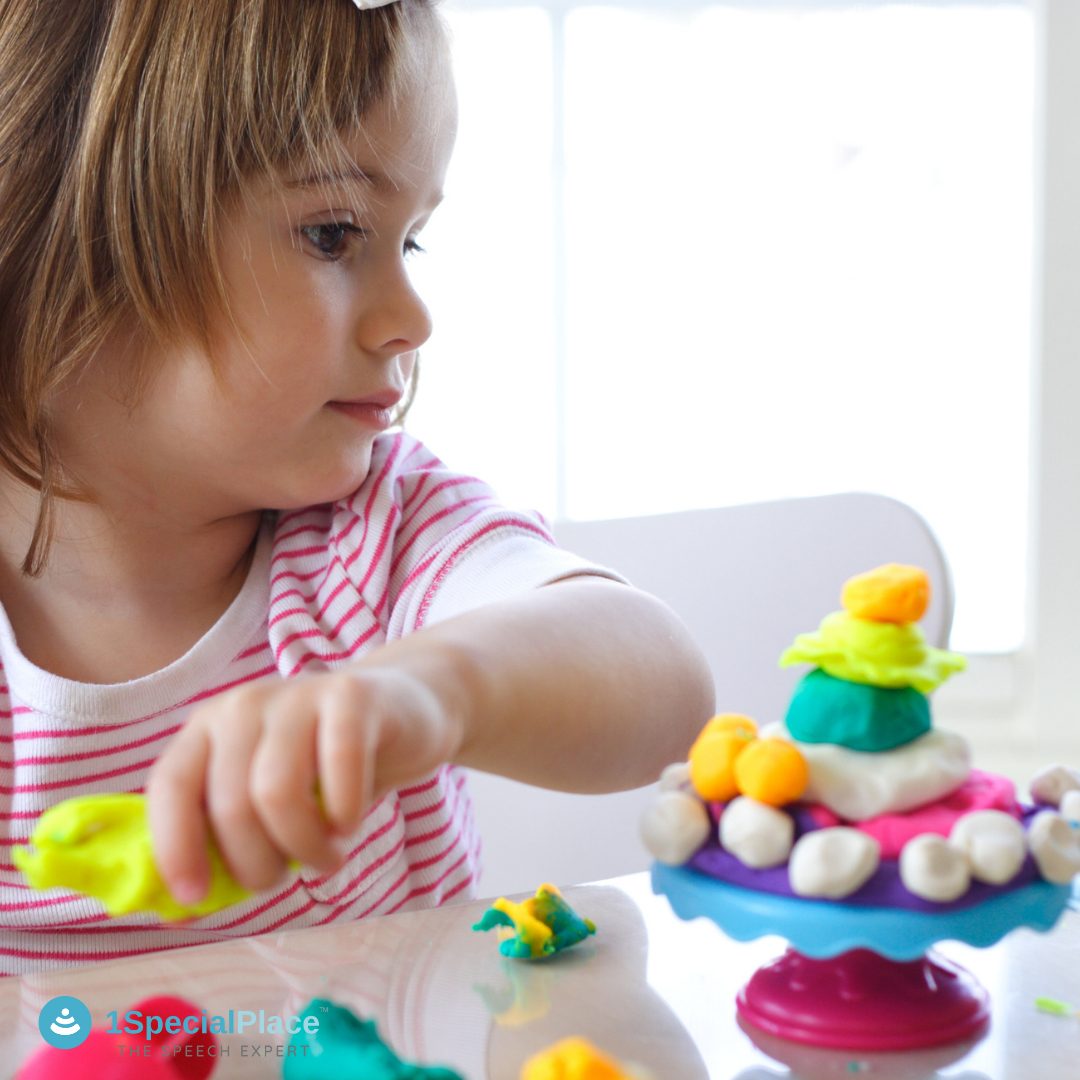
Everyday Items as Awesome Toys: Play Dough
Everyday Items as Awesome Toys: Play Dough
Everyday Items as Awesome Toys: Play Dough Play dough is considered as a multifaceted toy. It can be used to facilitate one’s language development and social communication skills. It can be used along with various tools such as cookie cutters, rolling pins, scissors etc. Cookie cutters are available in different shapes and can be chosen based on one’s interests such as flowers, animals, etc.
Activities using play dough to facilitate one’s basic social skills are listed below:
- To facilitate non-verbal (actions) imitation: While playing with play dough, your child can be encouraged to imitate your gestures. For example, while you make a ball out of play dough, ask your child to observe. And then make the same thing on her own. Another example, you can ask them to observe you rolling the play dough; and making a particular shape using a cookie clutter. Then they should be encouraged to do the same. Once the child is able to imitate these actions, ask them to imitate making a pizza out of play dough.
- Encouraging them to make a choice through pointing: Help them to choose from two different colours of play dough. To encourage pointing, you could take your child’s hand or facilitate to move their finger into pointing position.
- To facilitate turn taking: Encourage them to take turns to stack or roll or make shapes out of play dough.
Activities using play dough to develop receptive language skills are listed below:
- Follow a recipe: you can make your own play dough. You can find its recipes online. Ask your child to follow your instructions. For example, add salt in the bowl or pour water or mix the play dough with the spoon. Initially you can prompt them to follow your directions and gradually encourage them to do without you showing them what has to be done.
- Demonstrate action verbs: you can ask them to demonstrate actions such as roll the play dough or smash or twist it or put it in the bowl or take out .
- To increase vocabulary: you could make different shapes such as animals, vehicles, holiday shapes out of play dough using cookie cutters and then ask them to find a lion or ginger bread man or car.
- Understanding size concept: you can either make two balls of different sizes (big/small) or two snakes of different length (short/long) and ask them to pick up a big ball or feed the long snake.
- Understanding prepositions: you can have the play dough and bowls and then encourage them to follow direction such as put the play dough inside the bowl or hide it under the bowl etc.
Activities using play dough to develop expressive language skills are listed below:
- You can encourage them to request for more play dough, cookie cutters etc. If your child communicates through picture communication boards, facilitate them to point to the “more” picture and request for it
- For children who can express through single words, encourage them to imitate the name of the tool or the colour of the play dough which they want e.g. scissor or any cutter or orange or yellow play dough etc.
- If they are at the phrase level, facilitate them to express as in I want a yellow play dough or I want to make a flower or give me scissor etc.
- You can either prompt the child to describe your actions such as mama is rolling the play dough or direct your actions such as cut and make a ginger bread man
- You can make snakes of different length or balls of different sizes and facilitate them to make a choice by asking for what they want to play with e.g. mama I want to play with small ball or I want to give water to short snake.
- Answering to WH questions: make shapes of vehicles or animals using different cutters and put those inside the bowl. Then ask them questions such as which flies in the sky?, who can roar? etc and help them to answer verbally by picking up the shape from the bowl.
- Expression of WH questions: you can play guessing game with your child where the child can make a shape and ask you to guess what they have made e.g. can you guess what I made? Or something which goes on the road?
Source:
www. expressivelyspeaking.wordpress.com
If you wish to know more about Speech-Language Therapy, kindly contact us at info@1specialplace.com
https://therakonnect.com/appointments/book/1specialplace
For more ideas check out our other blogs https://1specialplace.com/news/
- Best Books for Children with Autism Spectrum Disorder - December 20, 2022
- Selective Mutism - November 13, 2021
- Everyday Items as Awesome Toys: Play Dough - July 27, 2021

Leave a Comment
(0 Comments)